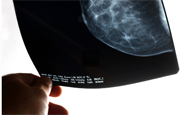
THURSDAY, Sept. 6 (HealthDay News) — Changing the position of a patient while receiving radiation therapy for breast cancer may reduce the later risks of heart and lung problems, according to a new study.
Breast cancer patients who get radiation therapy after breast-conserving surgery typically are placed in a supine, or face-up, position, said study leader Dr. Silvia Formenti, chairwoman of the department of radiation oncology and associate director of the NYU Cancer Institute at the New York University School of Medicine and Langone Medical Center in New York City.
Her new study, which included 400 patients, suggested the prone, or face-down, position may be better for most.
“Radiation oncology centers should develop the expertise to treat prone,” she said. The study was published as a research letter Sept. 5 in the Journal of the American Medical Association.
Of the 400 women in the study, half had cancer in the right breast and half in the left breast. Most of the women (nearly 79 percent) had invasive breast cancer. Of those, about 15 percent had lymph node involvement. The average age was about 56.
All the women had two CT simulation scans, first supine and then prone.
Simulation scans are used to help doctors visualize structures such as the heart and lungs and help them make a plan about the best treatment position to target the cancer effectively while sparing normal tissue as much as possible. Formenti compared how well each position would spare the heart and lung tissue from radiation.
She found for all patients that the prone position was linked to less exposure of the lungs than the supine position. In those with cancer of the left breast, the prone position was linked to a reduced exposure to the heart.
Formenti found, however, that in 15 percent of women with cancer of the left breast, supine positioning was better.
“The minority better off in supine position (15 percent in our study) was more likely to have a very small breast,” Formenti said.
“Breast cancer patients should first be simulated prone,” she said. “If some of the heart is in the field [to be irradiated] when prone … they should then be simulated supine to see whether they are better off in the standard supine position.”
Dr. Nayana Vora, clinical professor of radiation oncology at the City of Hope Comprehensive Cancer Center in Duarte, Calif., agreed somewhat with the conclusions.
“I think in selected cases this is a good idea,” she said, such as if the cancer has not spread to the lymph nodes. She said treatment planning is done first, to decide which position is best for each patient.
“The majority of our [patients] still get supine,” she said. “It is more comfortable for patients.”
It is possible to block the irradiation to the heart and other structures by using a shield-like device, she said.
“In selected cases we do prone,” she said, but some women are not comfortable in this position. Although each session is only about 10 minutes, women usually undergo radiation treatment for about six weeks, she said.
“Personal comfort has to be taken into account,” she said, but never at the expense of risks to the heart and lungs.
The authors noted that their study was limited to a single institution and a multi-institutional study would be needed to confirm the findings.
More information
The Radiological Society of North America and American College of Radiology have more about simulation in external beam radiation treatment.

